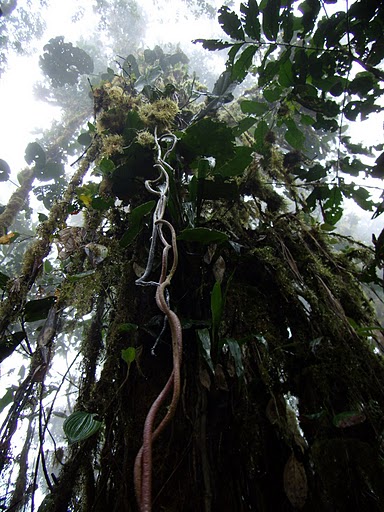Over the years that we’ve worked on reducing the global warming pollution, we’ve delved quite a bit into the scientific studies on what drives tropical deforestation. We’ve looked at major causes, such as palm oil and beef, and tried to keep up with the new literature on deforestation so that our actions and the policies we suggest are based on the latest science. Most recently, this is reflected in our review of cases in which tropical countries have significantly reduced deforestation or even reforested. Now, there’s a new report out that is an important step forward in summarizing what the science – all the science – tells us about the causes of deforestation and what can be done about it.
The report, by Kalifi Ferretti-Gallon and Jonah Busch of the Center for Global Development, is on “What Drives Deforestation and What Stops It?” It’s a meta-analysis – a quantitative review of all the available scientific literature on a subject, based on well-defined criteria for which papers to include and statistically rigorous methods to analyze them. The value of meta-analysis, particularly in a field in which a lot has been published but not always with the same conclusions, is that it tells us which hypotheses hold up and which ones don’t, taking all the evidence in all the papers into account.

Cloud forest. Source: Katherine Lininger, UCS.
Meta-analyses are becoming increasingly popular in science because the number of published papers on many subjects has become quite large, and that literature is increasingly accessible through electronic searches. Thus, rather than simply adding one more study to the dozens already out there, scientists are trying to draw conclusions based on reviewing everything that has been published—and not just by reading and summarizing what each paper says and what are its strengths and weaknesses, as with the classic review paper, but in a more rigorous, less subjective way.
Ferretti-Gallon and Busch have done this for the journal literature on deforestation, and have found 117 spatially explicit studies about it that contain econometric data and analyses. They have summarized the statistical results from these studies in an online, open-access data set. They have also noted other characteristics of the papers such as the kind of journal that published it. They recorded all the results, both for and against particular hypotheses, and used meta-analytic techniques to test whether, taking all the data from all the papers into account, each hypotheses has or hasn’t been proven.
This kind of comprehensive, statistics-based approach to the literature is a big improvement because it avoids the possibility, even unintentional, of “cherry-picking”—emphasizing the studies that support your ideas and the theories that you favor, and downplaying the ones that don’t. It’s also an example of the new trend towards “open science”—sharing one’s results broadly and using everyone’s results, not just the data you collected yourself, to draw stronger conclusions.
Deforestation happens when it makes more money
So, what were the main results that were supported by this literature? First of all, deforestation happens when it makes economic sense. It’s more likely to occur in situations in which you can make more money by doing it. Sometimes these situations are due to natural conditions—e.g. deforestation is more likely on flat and fertile soils, and less likely on steep slopes and in wetter areas. All of these relate to the productivity and profitability of agriculture and livestock production once the forest is cleared.

Roads into forest areas often lead to deforestation. Source: Doug Boucher, UCS
But some of the factors that favor deforestation are very much under human control. For example, they found that proximity to roads and to cities tends to lead to deforestation, while isolation and difficulty of access discourage it. These relate to whether you can get your cattle or soybeans to the market at a reasonable cost. So decisions by government planners about where to build new roads can make a big difference in terms of stimulating deforestation.
Ferretti-Gallon and Busch also found that the literature supports the idea that establishing protected areas makes a difference, leading to less deforestation. There’s still a lot of debate in the literature about how strong an effect they have, but they do work. These conclusions may seem like just common sense to many of us. But it’s important to establish them based on evidence, because a lot of “common sense” ideas turn out not to be correct. (In the phrase that I always thought came from Will Rogers, “It ain’t what you don’t know that gets you into trouble. It’s what you know for sure that just ain’t so.” Turns out that it wasn’t Will who said it, but a fellow named Charles Kettering, in an article in Scientific American.)

Will Rogers. He wasn’t the one who said it. Source: myhero.com
The new meta-analysis doesn’t quite disprove things that we know for sure, but it does show that the evidence for some of the conventional wisdom isn’t there. For example, a common assumption is that securing land tenure will reduce deforestation. The literature does establish that this holds in the case of Indigenous Peoples’ lands, but not overall.
Similarly, it’s often said that making forests economically valuable by harvesting timber or non-timber forest products in them will lead to their being conserved, rather than cleared for pasture or cropland. In other words, “use it or lose it.” But the meta-analysis shows that the studies overall don’t support this argument, most likely because the roads used to extract timber, by making the area more accessible, can also lead to complete clearing.
For two other important variables, poverty and population, there are statistically significant trends but real difficulties in interpreting them. Poverty is significantly associated with less deforestation, exactly contrary to the common impression that tropical forests are being cleared by small subsistence farmers who are just trying to feed their families. But then, does this mean that programs that increase rural incomes will increase deforestation? No, the literature doesn’t support that conclusion either, and if the income support is linked to forest protection, as in Payment for Ecosystem Services (PES) programs, the effect is to reduce deforestation.
Similarly, population has a positive correlation with deforestation, but it’s unclear why—what causes what? Is it because areas where new land is being made available by clearing are attractive to colonists, or is because when there are more people in the area, they can cut down more forest? Both the poverty and the population relationships are complicated by what economists call “endogeneity”, a manifestation of the old correlation-ain’t-causation issue.

Logging in eucalyptus forest in southeastern Australia. Source: Doug Boucher, UCS
Another interesting result of the meta-analysis is that for a few variables, the results seem to depend on what kind of journal the article was published in! For example, papers in economics journals tend to find that timber activity leads to less deforestation and rural income support to more, while papers in other kinds of journals (e.g. environmental science, geography) find just the opposite. The authors looked at the effect of journal type based on “the assumption that the review process in economics journals is more likely to be tougher on unwarranted claims of causality”, but these results could just as well be an indication of the differing theoretical biases of different academic disciplines.
A better way to do science
Beyond what it tells us about deforestation, this report (which is likely to be published in a journal in the next few months) is important because it exemplifies a better way to do science. Researchers have traditionally been competitive with each other and have considered their data as valuable intellectual property. New ways of doing science, such as this meta-analysis, both exemplify and take advantage of the trend towards “open science,” with data being shared openly so that others can replicate analyses, modify how they’re done to see if it makes a difference, or use the data to ask new questions. This means that everyone can work with a much larger sample size than just what comes from our own research. Rather than being personally owned, knowledge and information become the common property of the whole scientific community.
Of course, this approach, and meta-analyses in particular, won’t solve all our problems. The endogeneity/correlation-vs.-causation issue will leave ample room for ongoing debate, as will the meaning of non-significant results—do they show that there really isn’t any relationship at all, or just that we haven’t done the right kinds of studies or measured the right things?
Moreover, the decision as to what criteria to use to include articles in a meta-analysis can affect outcomes. So, for example, Ferretti-Gallon and Busch’s restriction of their sample to spatially explicit studies with econometric analyses excluded considerable numbers of published papers, although possibly few of those had the kinds of results that could have been integrated with the more than 100 that were included.

Orchid in a South American rain forest. Source: Katherine Lininger, UCS.
Finally, there’s the fundamental issue of whether the published literature is really representative of the global reality. For example, there were far more studies of deforestation in Latin America than in either Africa or Asia. If the published scientific studies are a biased sample of what actually is happening, there’s no way that meta-analysis can correct that.
But with all these caveats, this study is an important step forward—in its results, its methods, and in the data that it makes available for all of us concerned about deforestation.
